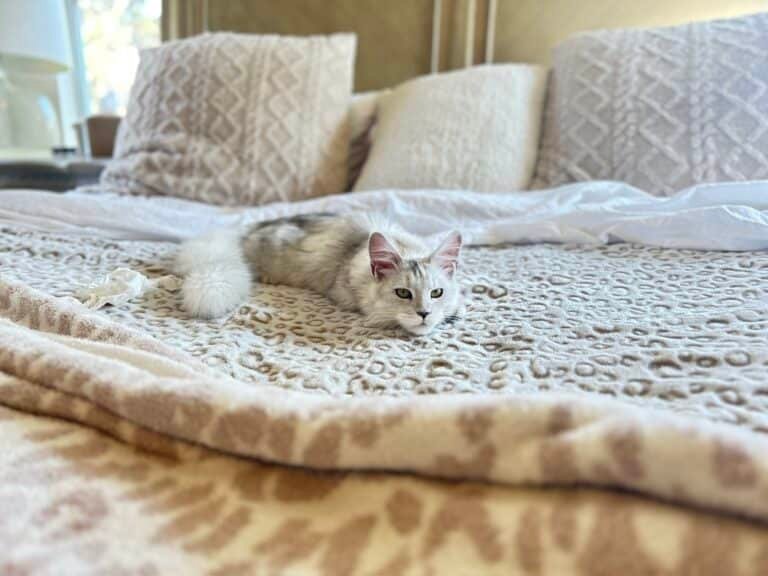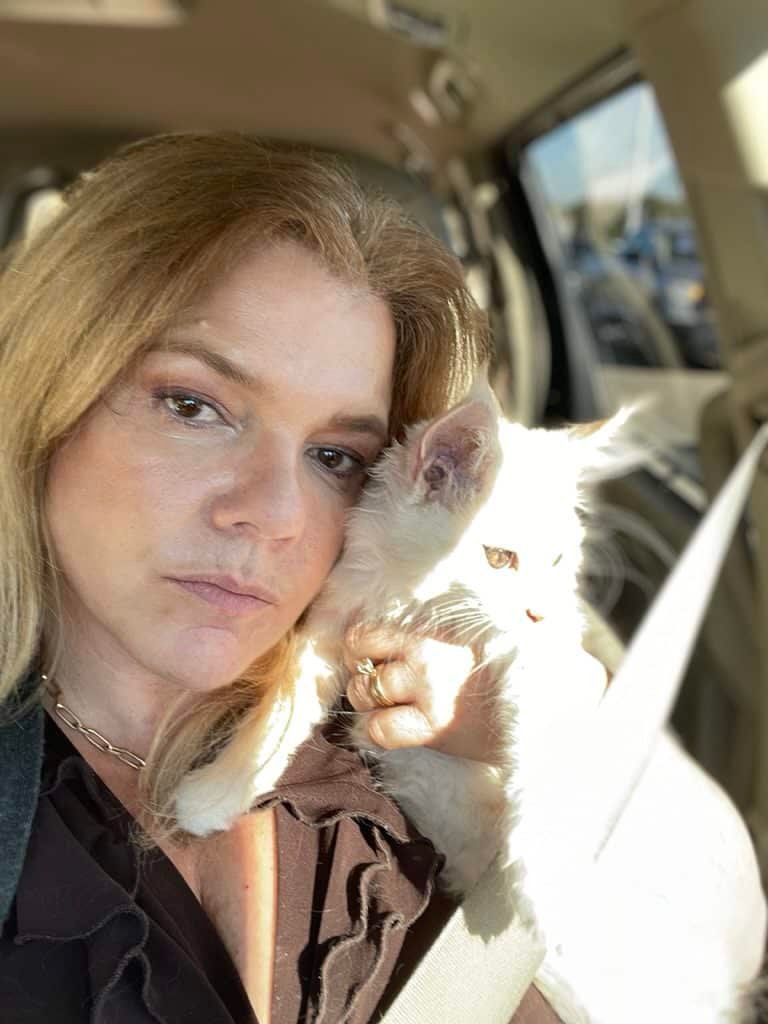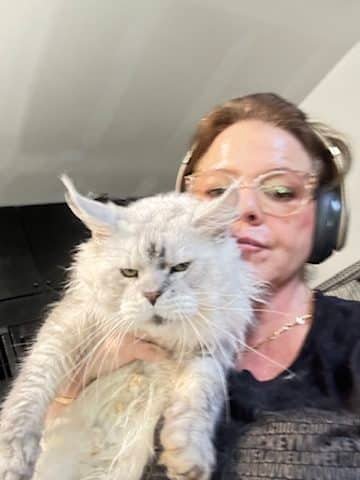How to help my new maine coon kitten adapt to our new home.
When you bring a new Maine Coon kitten or cat home, remember that they need time to adjust. Being patient and giving them space to explore is important, however don’t give them free run of your whole house. Allow them to get comfortable at their own pace. Provide a quiet and safe environment for them to feel secure.

Cats aren’t fans of change, and a move into a new home is a momentous occasion for them. Some cats become stressed easily with simple events such as moving furniture or seeing another cat outside the window.
Here are some simple tips on how to help a kitten adjust to a new home and to understand how they react to changes in their environment.
The Magic Unfolds Over Three Days
Watch your New Maine Coon Kitten closely during this time. Signs of stress in cats can include hiding, excessive grooming, loss of appetite, or aggression.
By being observant and responsive to your cat’s needs, you can help them adjust more easily to their new surroundings. Spend a lot of time with them to help them feel secure during this transition period.
Sometimes when we bring our new Coonie home, we feel nervous and scared. Bringing our new maine Coonie home can be a nerve-wracking experience.
Bringing our new Coonie home can be stressful. We may worry if he is comfortable around people or if he will hide from us. We also worry that he might become aggressive.
You might be curious about how long a cat will stay hidden in a new environment? The duration varies from cat to cat. Some may not hide at all, while others may hide for three days, a week, or even longer.
The kitty is scared and needs lots of human time. You need to pick them up a lot and hold them so they can start bonding with you. Your new Maine Coon kitten will need your love and company now that they are away from their siblings and mom. Try to hold them, kiss them, and spend time with them as much as you can.
Use this time to let other family members spend time bonding with the Coon kitten too. Make sure to dedicate plenty of time to bonding with them and helping them adjust to their new home.
Help your cat feel at home in their new environment quickly by being patient and understanding. The first three days are crucial for your new Maine Coon kitten to adjust to its new surroundings. Everything is unfamiliar, filled with exciting spaces and new activities. All the people are new in their life, and the scents and noises are distinct.
This might be too much for a young kitten and even more so for a mature cat. To keep your Maine Coon calm, keep them in one room like a bathroom or bedroom for at least three days. During this seclusion period, you can observe their eating, drinking, and litter usage habits.
Spend quality time with your new kitten in a safe space. Build a strong bond with them without any fear of them running away or hiding.
In my experience of living with and breeding Maine Coon Kittens, I have noticed that they go through different stages. I have lived with and bred Maine Coon Kittens, and I have observed that they go through various stages. At one point, they may be a bit wild, but after that stage, most of them will calm down. They become loving, sweet and cuddly.


We breed Persians and Exotic Shorthair kittens too, and they never go through a wild phase, they are always sweet. Because of that you would never have to wonder if your Exotic Shorthair Kitten doesn’t love you. As Maine Coon Breeders, we did experience that fear with our first Maine Coon litters.
Having small cat trees and scratching posts in a small area is great. You can leave Maine Coon kitten kibble or cat food out in a plate for free feeding, just avoid using plastic. Ceramic or Stainless steel food and water bowls are perfect. Freshwater should be available in a bowl or a drinking fountain.
Feed these tiny gentle giants twice or three times a day with wet food. Adult cats don’t need to eat wet food more than once a day.
Young kittens like to play too, so a cat teaser is always a good to to use with your new Coon cats
During the initial three days, it’s crucial to exercise patience. Some cats can be quite anxious and may prefer to stay hidden. On the other hand, some may be more self-assured and appear unaffected.
Keeping the kitten or cat in a small space is important. This will help them adjust to their new home. Also, it will help them find their litter box. Even if your kitten seems to be adjusting perfectly, you should follow these steps.
After three days, you can start introducing your kitten to the rest of the house and other pets. Ensure that your kitten is comfortable and familiarized with the scene. Here are some suggestions on how to introduce your new kitten to other pets.
Three Weeks Later…
After three weeks, your Maine Coon is settling in and adjusting to the daily routines. This involves adjusting to meal times.
When your cat starts to feel at home. By this time, he should have complete access to the entire house.
Make certain to equip him with scratching posts in different areas, along with his beds and blankets. Remember to comb your kitten because the Maine Coon is long hair breed. Maybe you can start playing fetch with your baby at this point.
Your kitten will begin to feel comfortable in your home. This will create a safe and welcoming space for both of you to enjoy together. We want to help you get a great foundation to your great journey with your new Maine Coon.
Each cat will take its own time to feel comfortable. Be patient and keep giving your Maine Coon positive reinforcement.
This should be helpful to give you the best tips on how to help your maine coon adjust to its new home. We have other articles on specific topics.
Be patient and remember that cats are their own little beings, and they do things on their own time. With time, understanding, and a safe environment, they will adjust and become happy pets forever. Be sure to make your home kitten proof before your new baby arrives.
Hi, I’m Lucy Appel. I am the Guardian of the kittens at Bellspurr. My goal is to provide you with information about how to acclimate your Exotic Shorthair or Maine Coon Kitten to your home, And give you healthy, well-socialized Maine Coon and Exotic Shorthair Kittens that you’ll love forever.
A Maine Coon Snippet before we go.
Did you know?
Legend holds that when Marie Antoinette was sent to prison awaiting her execution, her beloved Angora cats were saved by sailing away on a boat to America, eventually becoming ancestors of the Maine Coon breed.

